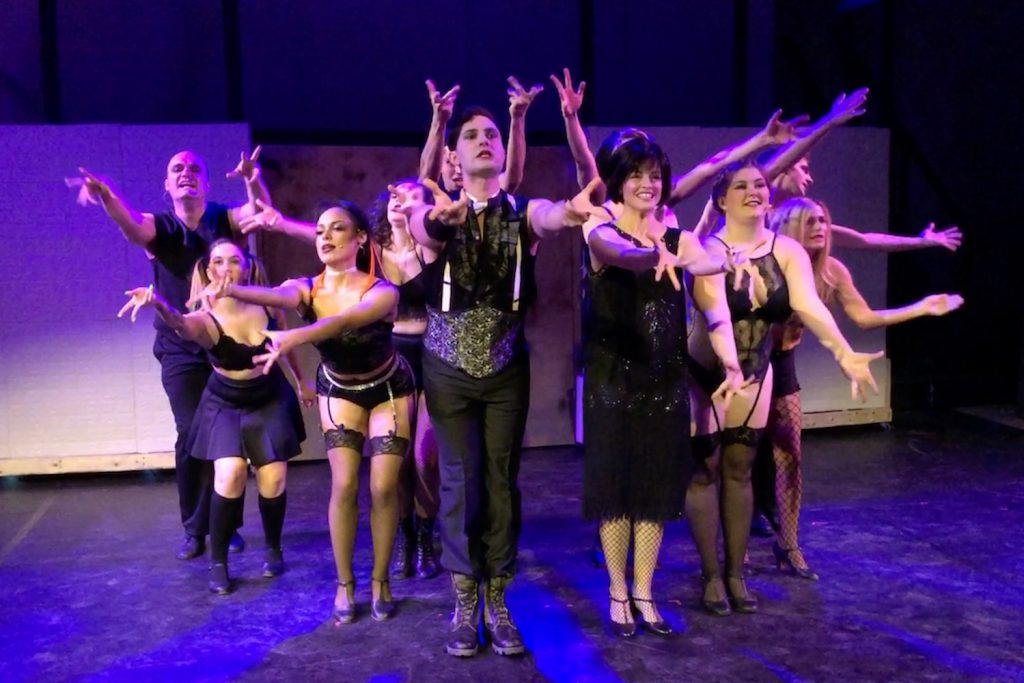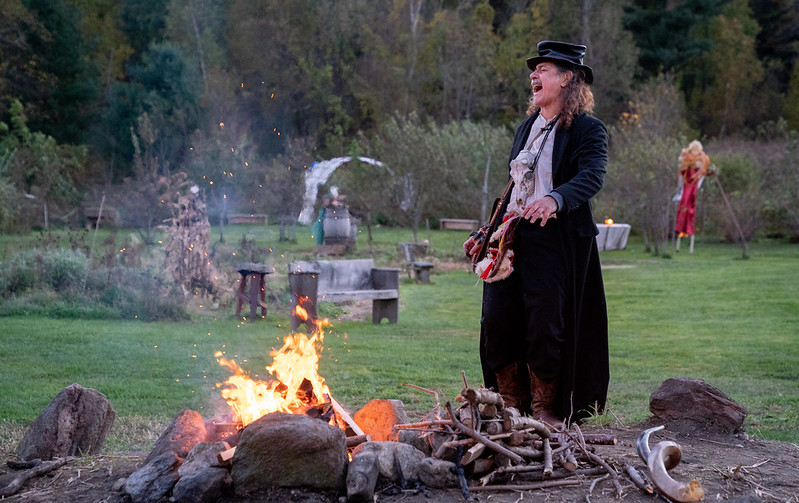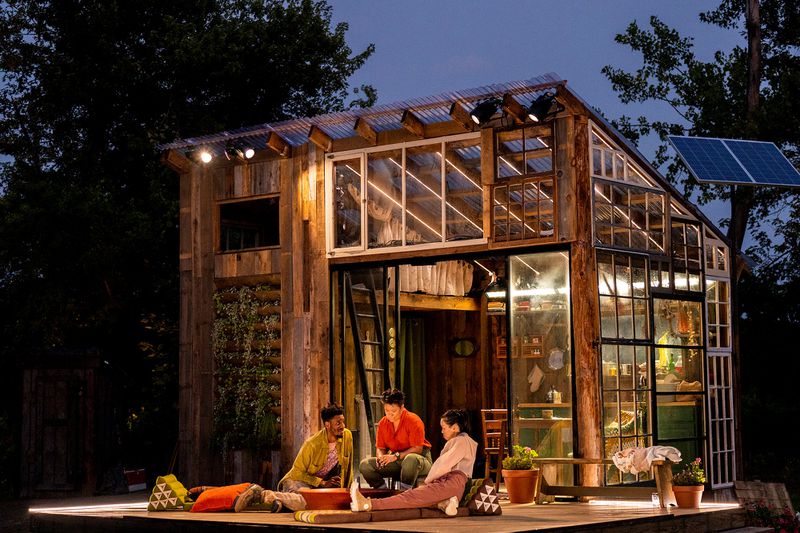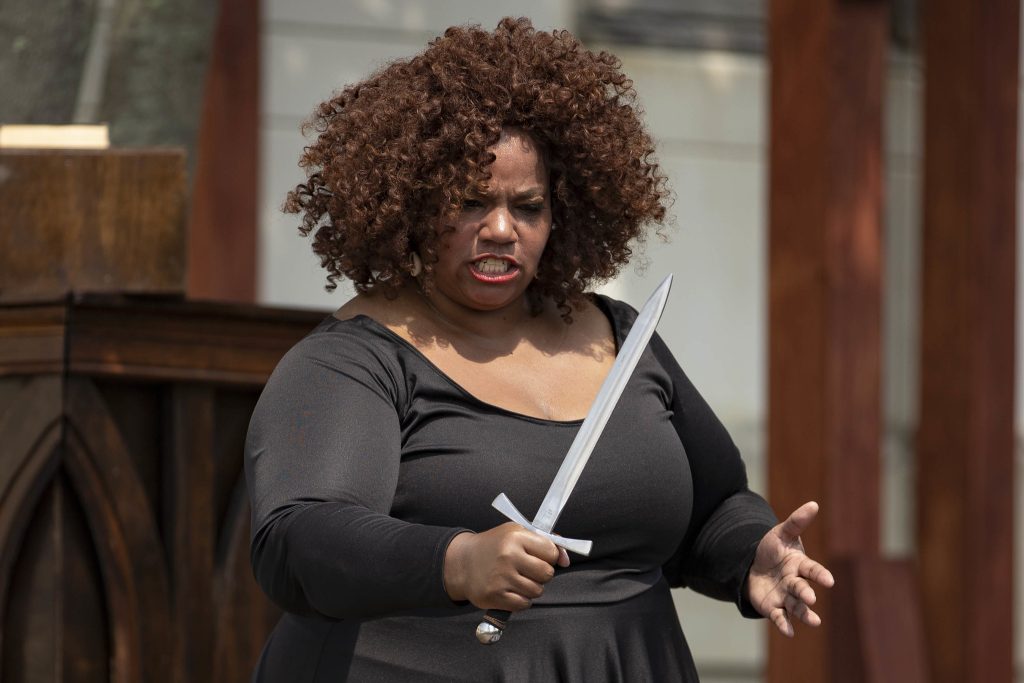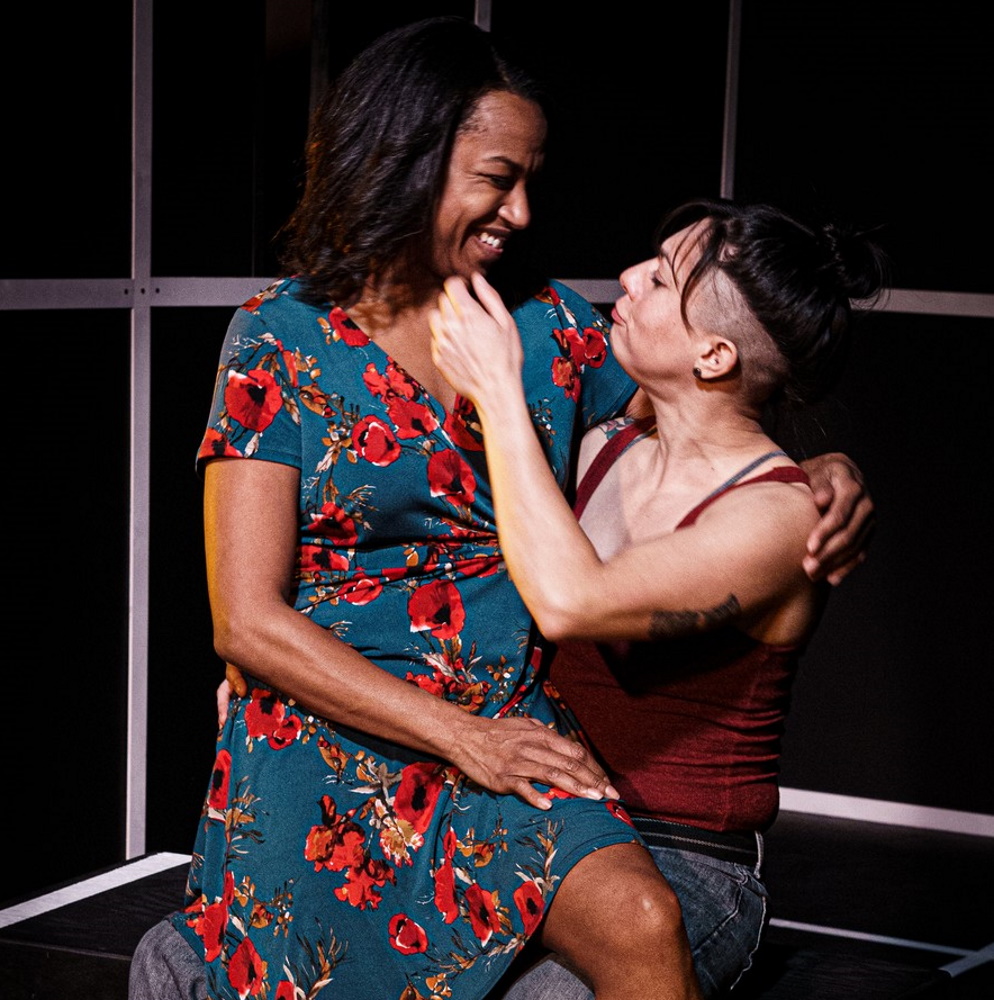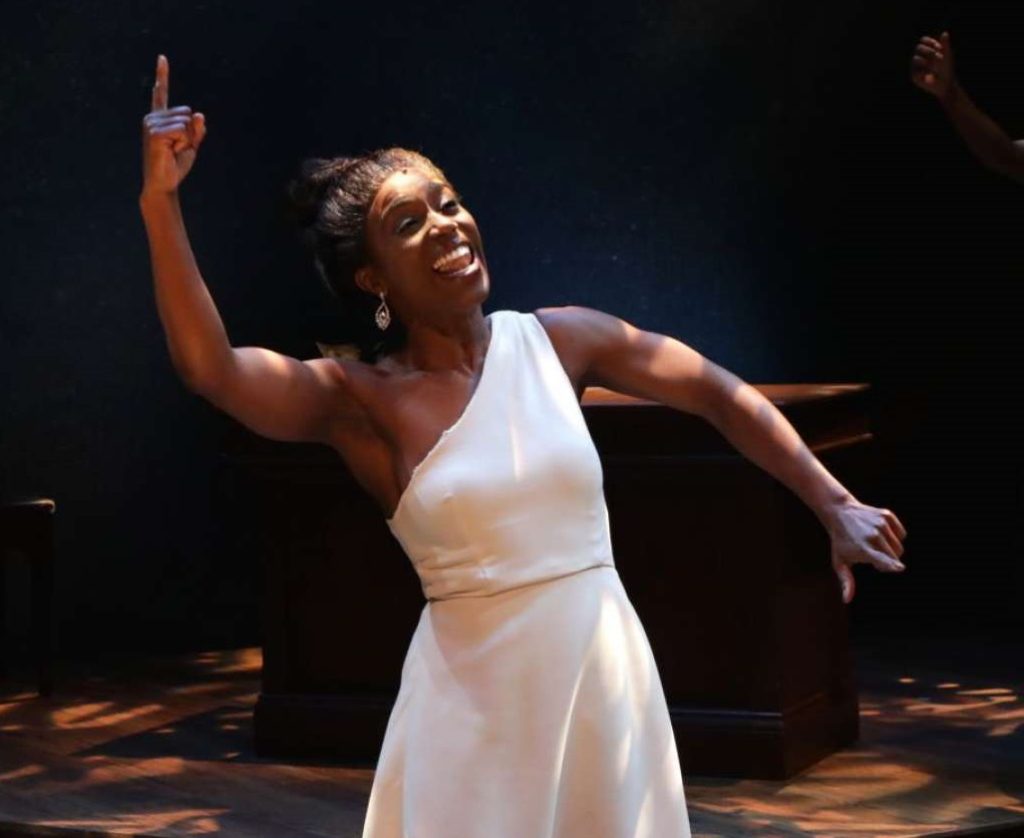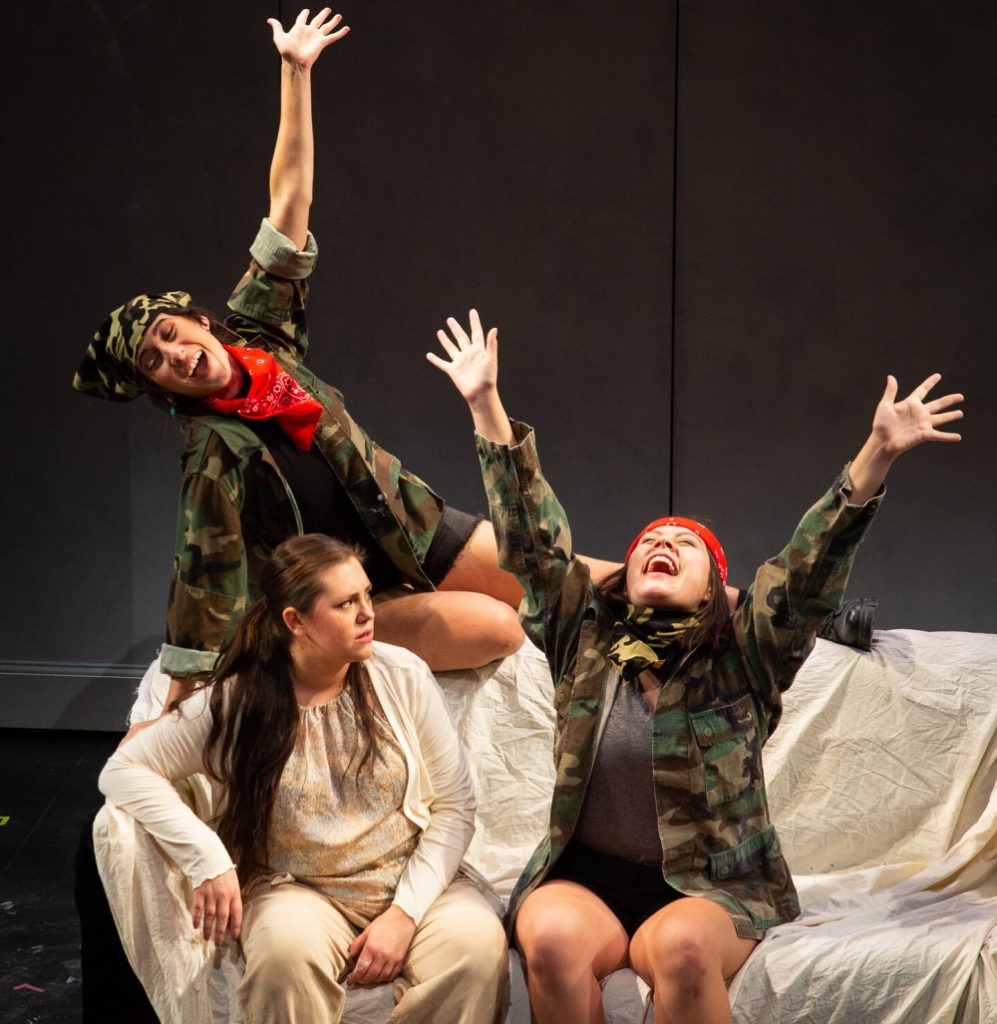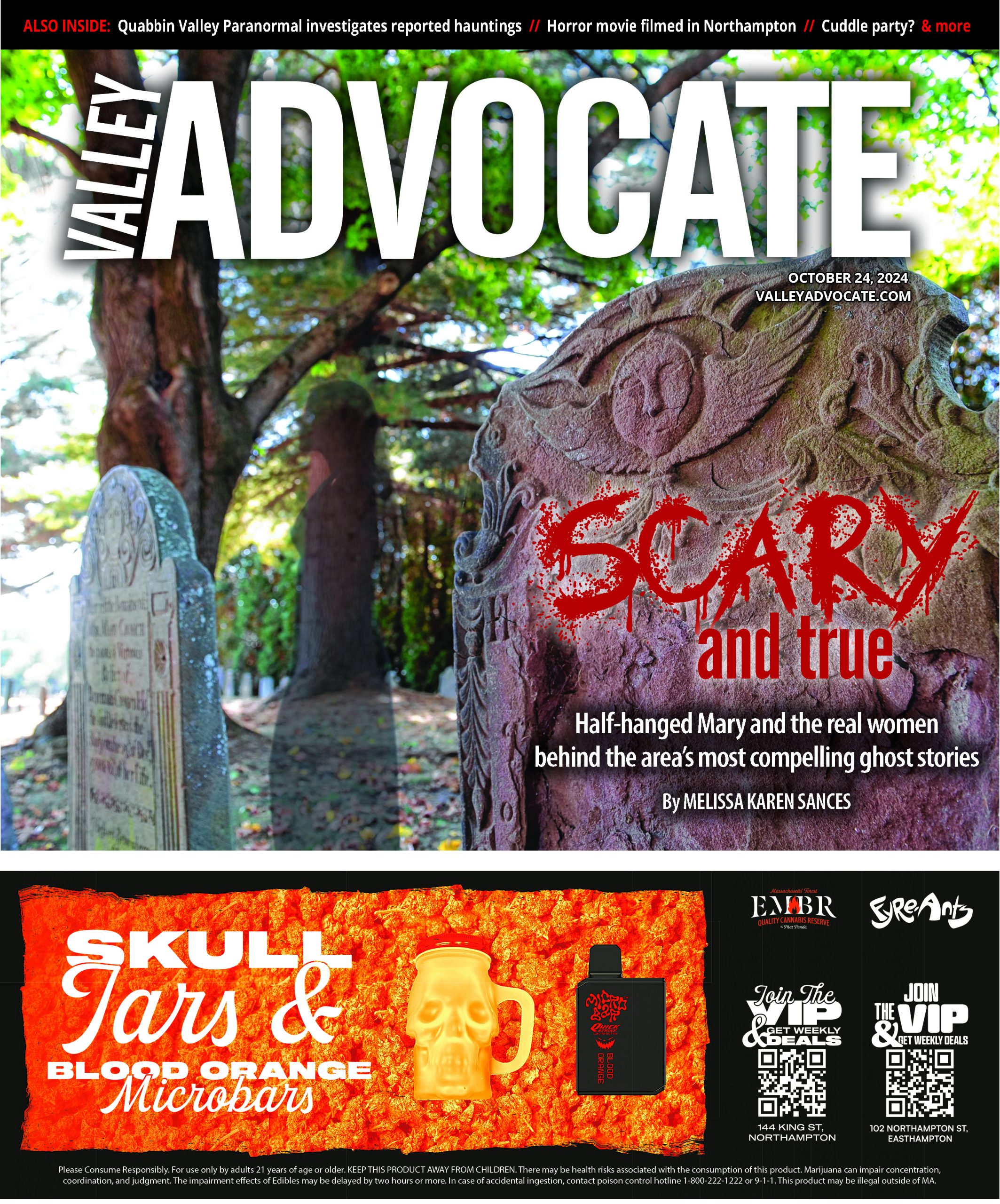After the spring, summer, fall and winter of our discontent — not to mention fear, frustration and isolation — this year area theaters tentatively, and often inventively, stepped onstage again. Some initially performed outdoors, some played inside/outside under tents, some continued streaming in tandem with their live shows.
Even with continuing, and often shifting restrictions — union rules and government mandates regarding capacity limits, social distancing, vaccination and masking requirements — the sense of determination by performers and audiences alike to get back to live-in-person was unmistakable, along with the sheer joy of being back together.
And as theaters found their way back, necessity, that inventive parent, stimulated some ingenious approaches to performance that actually heightened the experience.
The great outdoors
It wasn’t until June that I attended any performances in person. Throughout the spring, Zoom still ruled as theaters strategized reopening while keeping an online presence. Silverthorne Theater Company kept its regular staged-reading series going, virtually, along with three full productions, two of them filmed — a new-play festival and a one-woman show — and one performed live-on-Zoom with audience participation: Steve Wangh’s The Waiting Room, set in an anteroom to the afterlife, drew a whimsical parallel to the otherworldly experience of Zoom itself.
The Valley’s first in-person live shows were staged outdoors. The first was Re/Emergence, performed in an Easthampton orchard by an interdisciplinary collective in celebration of the (hoped-for) end of isolation and lockdown. 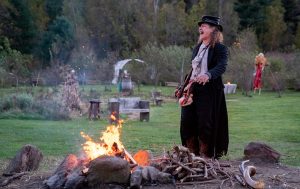 For its part, Double Edge Theatre barely tweaked its usual outdoor formula. First Howling at the Moon, a chain of personal stories, and then the company’s annual Summer Spectacle, Memories and Dreams, took visitors, masked and distanced, on a magical tour of its Ashfield farm.
For its part, Double Edge Theatre barely tweaked its usual outdoor formula. First Howling at the Moon, a chain of personal stories, and then the company’s annual Summer Spectacle, Memories and Dreams, took visitors, masked and distanced, on a magical tour of its Ashfield farm.
Both of Jacob’s Pillow’s formal spaces were out of action — one is under renovation, the other burned to the ground last winter — so the dance festival presented its entire summer season alfresco. The ever-popular Dorrance Dance company offered Ways to Now, a site-specific sequence of mini-pieces which spread to the far reaches of the Pillow’s campus — and was rained out for all but one of the performances.
Rain bedeviled the entire season at Williamstown Theatre Festival, three outdoor productions whose opening nights were repeatedly delayed when the heavens opened up instead. After a couple of rained-out attempts, I saw the appropriately water-themed Row, about the first woman to row solo across the Atlantic. It was set on, and in, the big reflecting pool at the Clark Art Institute.
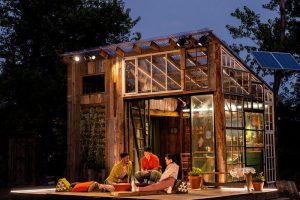 Perhaps the summer’s most inspired work-around was Walden, at Hartford’s TheaterWorks, which takes place in a cabin in the woods. Instead of a stage-set approximation, designer You-Shin Chen built a cabin on the Connecticut riverfront, and we watched from the front yard. This show and several others had hybrid runs, adding streaming showings to in-person performances for stay-at-homes.
Perhaps the summer’s most inspired work-around was Walden, at Hartford’s TheaterWorks, which takes place in a cabin in the woods. Instead of a stage-set approximation, designer You-Shin Chen built a cabin on the Connecticut riverfront, and we watched from the front yard. This show and several others had hybrid runs, adding streaming showings to in-person performances for stay-at-homes.
The Majestic Theater’s Danny Eaton chose to keep his intimate house dark till it could fully reopen and present a full season, starting in late August when The Pitch, by Northampton playwright Stan Freeman, resumed its run that was cut short when all the theaters went dark in March 2020.
In Northampton, the emergent Play Incubation Collective staged scenes from Darcy Parker Bruce’s tetralogy-in-progress, The Piedmont Project, in the parking lot of the Community Arts Trust building, which also hosted the Valley’s first indoor performances. Serious Play’s long-gestated response to the climate crisis, Moving Water, splashed into the building’s cavernous Workroom in August, followed by an ad-hoc ensemble led by Hilary Dennis, performing Macbeth as Shakespeare’s troupe would have — bare stage, minimal rehearsal and no director. On the main floor, the adventurous K and E Theater Group reclaimed the stage with three fall musicals, including a timely production of Cabaret (featured image) that underscored the mounting horror of fascism.
In the Berkshires, a couple of theaters opted for a halfway house between open-air and indoor performance. Barrington Stage Company pitched an open-sided tent in a Pittsfield parking lot for two of its summertime productions, meanwhile performing three more for socially distanced audiences in its mainstage theater.
Chester Theatre Company came down from its hilltop haven to Hancock Shaker Village, where it performed on a simple platform under a large canopy beside a cow pasture, whose residents were sometimes moooved to voice their appreciation. Despite the cover, safety rules required the audience to take shelter indoors at the threat of lightning, and several performances were canceled or truncated by approaching storms.
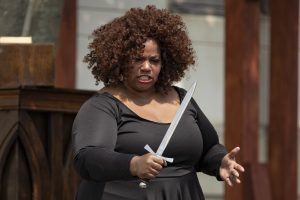 At Shakespeare & Company, Actors Equity rules stated that performances must begin outdoors, but could move inside if weather stopped the show. Midway through opening night of King Lear, rain drove the inaugural performance in the troupe’s New Spruce Theatre indoors, and the next week the final preview of Debra Ann Byrd’s one-woman Becoming Othello moved inside due to extreme heat. In both cases, the shift hobbled the show’s’ momentum, frustrating both patrons and performers.
At Shakespeare & Company, Actors Equity rules stated that performances must begin outdoors, but could move inside if weather stopped the show. Midway through opening night of King Lear, rain drove the inaugural performance in the troupe’s New Spruce Theatre indoors, and the next week the final preview of Debra Ann Byrd’s one-woman Becoming Othello moved inside due to extreme heat. In both cases, the shift hobbled the show’s’ momentum, frustrating both patrons and performers.
Black lives matter, at last
The upheavals of 2020 were not lost on the theater community, here and across the country. Plays by, about and with people of color have proliferated in the past year in a tardy recognition that Black lives matter, on the stage as on the street.
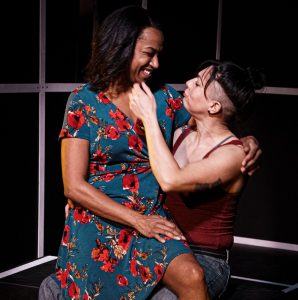 In this region, for example, the Berkshire Theatre Group mounted a musical life of Nina Simone, Barrington Stage produced a dance-theater piece about Central American migrants, TheaterWorks’ Walden had a BIPOC cast, and two stage adaptations of classic movies — White Christmas at BTG and It’s a Wonderful Life at Hartford Stage — fielded multiethnic companies in traditionally all-white vehicles. In the Valley, Silverthorne Theatre mounted Bright Half Life, by the queer Black playwright Tanya Barfield, about an interracial lesbian couple.
In this region, for example, the Berkshire Theatre Group mounted a musical life of Nina Simone, Barrington Stage produced a dance-theater piece about Central American migrants, TheaterWorks’ Walden had a BIPOC cast, and two stage adaptations of classic movies — White Christmas at BTG and It’s a Wonderful Life at Hartford Stage — fielded multiethnic companies in traditionally all-white vehicles. In the Valley, Silverthorne Theatre mounted Bright Half Life, by the queer Black playwright Tanya Barfield, about an interracial lesbian couple.
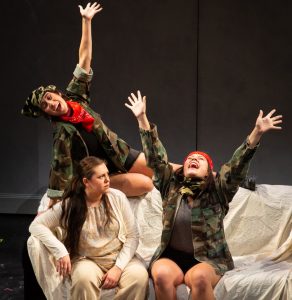 At least two works by Indigenous playwrights hit regional stages this fall, both of them satirical comedies. At WAM Theatre, Kim Senklip Harvey’s Kamloopa turned a longing for traditional identity into an antic road movie; and Smith College presented Larisa FastHorse’s lampoon of well-intentioned white people, The Thanksgiving Play, which WAM had Zoomed last year. In addition, Double Edge’s Howling at the Moon was led by Nipmuc storyteller Larry Spotted Crow Mann.
At least two works by Indigenous playwrights hit regional stages this fall, both of them satirical comedies. At WAM Theatre, Kim Senklip Harvey’s Kamloopa turned a longing for traditional identity into an antic road movie; and Smith College presented Larisa FastHorse’s lampoon of well-intentioned white people, The Thanksgiving Play, which WAM had Zoomed last year. In addition, Double Edge’s Howling at the Moon was led by Nipmuc storyteller Larry Spotted Crow Mann.
As the year went on and most state-mandated restrictions were lifted, theaters continued threading carefully through pandemic risks and requirements. Most venues still oblige patrons to be masked and show proof of vaccination. (In this fall’s theater department productions at UMass and Smith College, the performers as well as the audience were masked, giving rise to aesthetic and acoustic challenges.)
Now, as the Omicron variant is surging and once again Broadway lights are going dark — hopefully not to be duplicated here — Covid hesitancy has returned, or been reinforced, for some theatergoers. Let’s hope 2022 isn’t 2020 Mark II. My lasting memory of 2021 is the live performances I’ve attended that pulsed with a shared feeling: It’s good to be back.
Photo credits:
Bright Half Life, Frank Aronson
Walden, Chris Capozziello
Becoming Othello, Christina Lane
Nina Simone: Four Women, Jacey Rae Russell
Kamloopa, David Dashiell
Others courtesy of the theaters.
Chris Rohmann is at StageStruck@crocker.com and valleyadvocate.com/author/chris-rohmann

